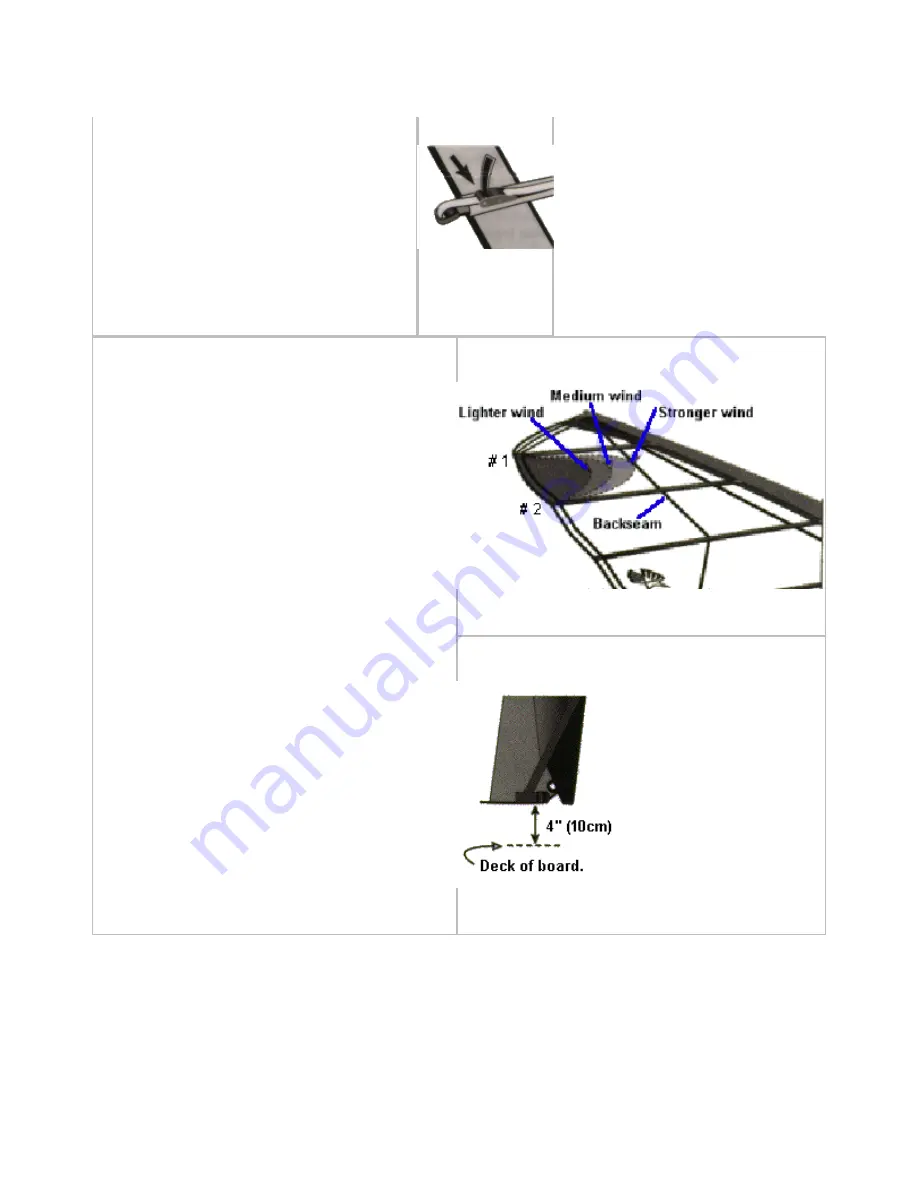
Rigging a 1998 Ezzy Rev 5 Race Sail
loosened until the Velco touches the buckle.
This will allow the cam batten to slide futher into
the sail and will make it easier to get the cam on
to the mast. Also, make sure the sail is
outhauled flat before attempting to snap cams
onto the mast
Quick Tip:
Opening the zipper will make it
easier to snap the cam on the mast. To avoid
damaging the zipper, be sure to close the zipper
before tensioning the cam batten.
5) Downhaul the sail to make the leech go loose
between the battens. A good way to gauge the
correct downhaul is to observe the head leech
area between battens #1 and #2. For high wind
sailing, the looseness should extend to the back
seam on the leech panel. For lighter wind sailing
the looseness will end about 10cm (4") behind
the back seam. When you are checking the
looseness, the sail must be resting on the boom
and the tip of the mast (i.e. do not elevate the
head up off the ground).
Quick Tip:
For the correct sail rake, the foot edge of
the tack should be approximately 4 inches (10cm)
above the deck of the board. Always keep your base
extension at its shortest possible setting. If there is not
enough space for downhauling and you have mast
extending from the top, use the adjustable top to raise
the sail up on the mast rather than extend your base
Quick Tip:
The amount of downhaul tension will vary
for different wind conditions: A high-wind setting
requires more downhaul tension to loosen the upper
leech and give more twist, increasing your top-end
speed. For lighter wind, the sail will perform better
with less downhaul. This gives the sail a tighter leech
and better low-end power, which you will need to get
on a plane quicker and be carried through lulls faster.
Page 2























